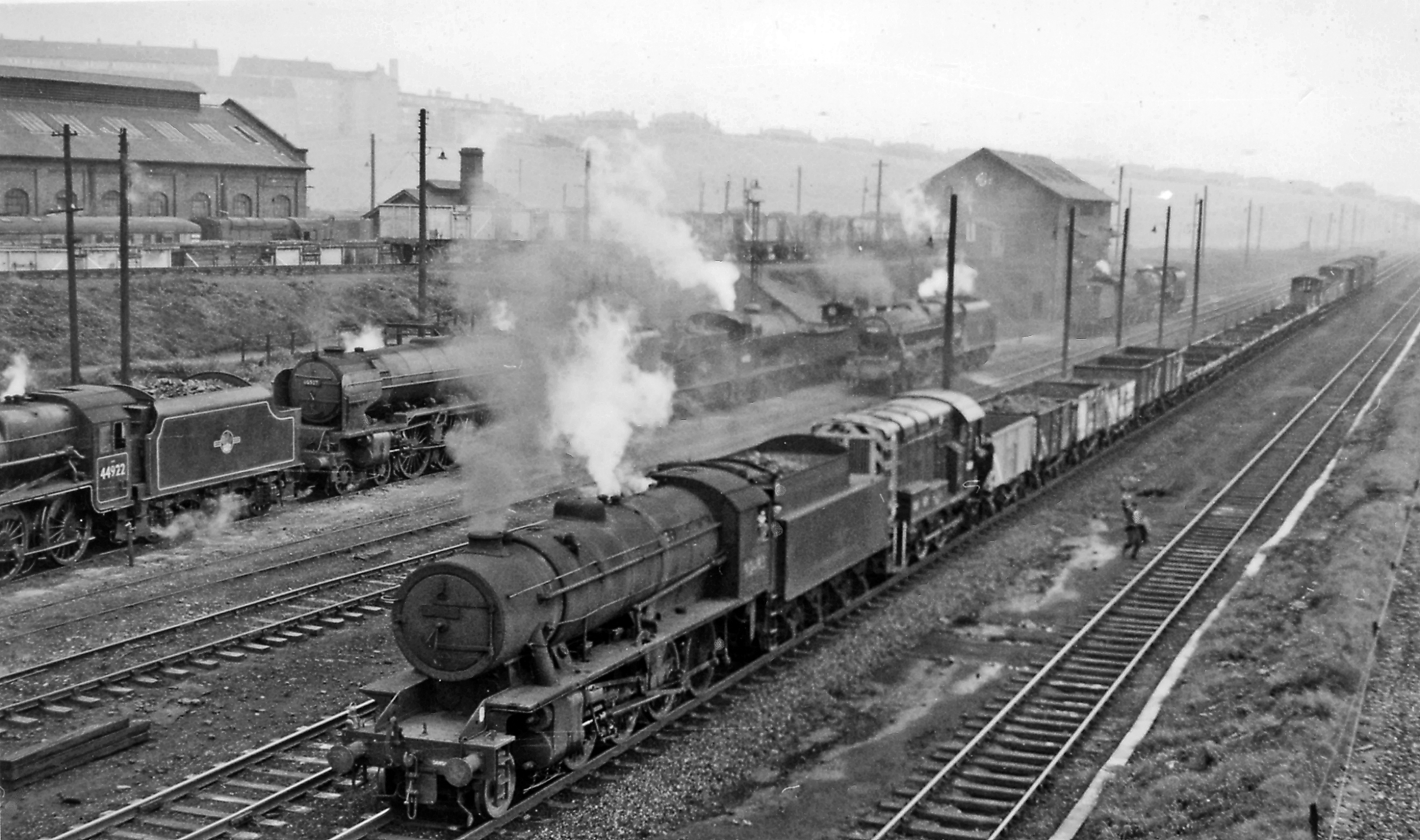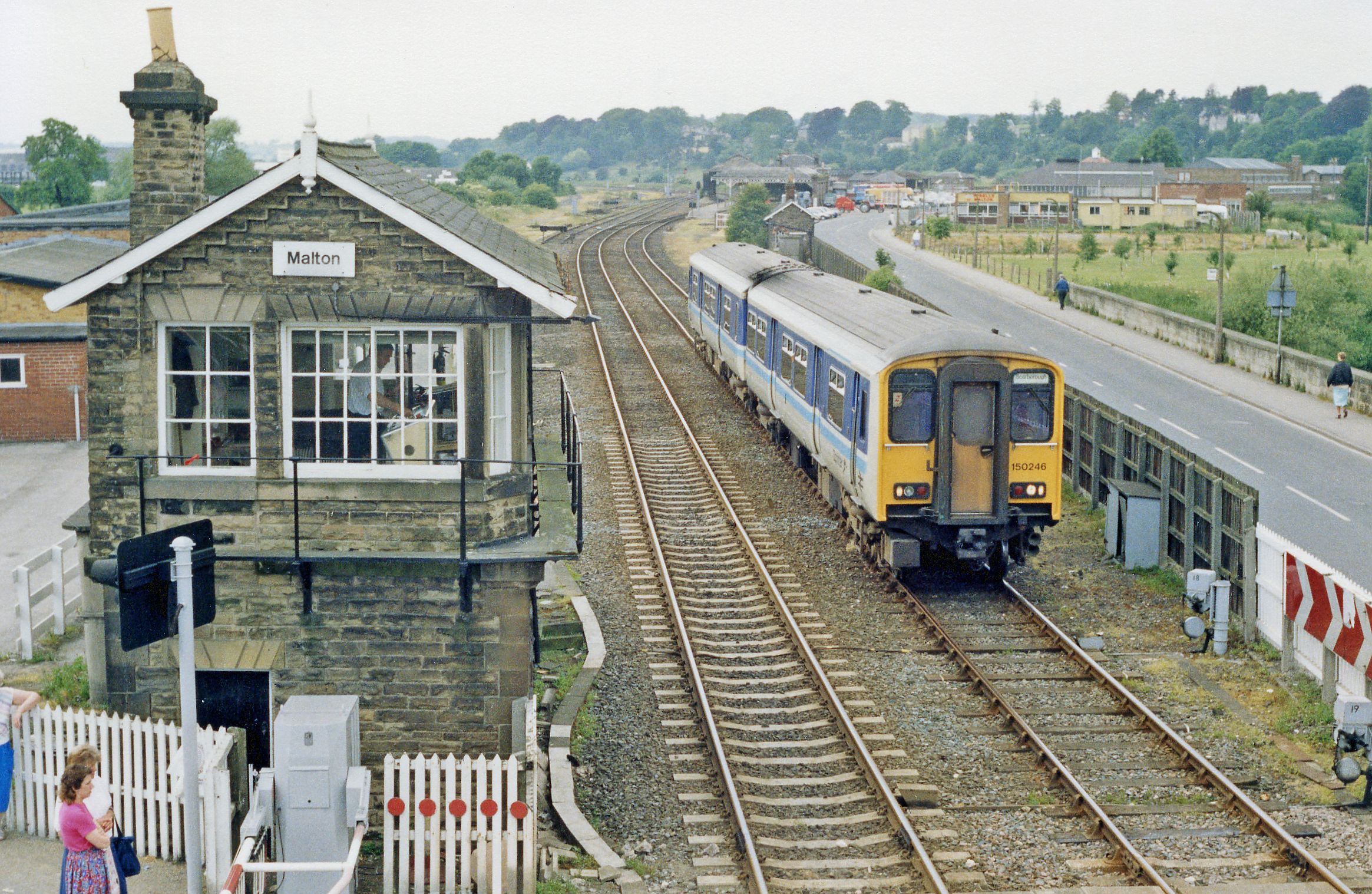|
Settrington Railway Station
Settrington railway station was a railway station on the Malton & Driffield Railway in North Yorkshire, England. It opened on 19 May 1853, and served the village of Settrington Settrington is a village and civil parish in the Ryedale district of North Yorkshire, England, about 3 miles (5 km) east of Malton. It was historically part of the East Riding of Yorkshire until 1974. History Sir Francis Bigod of Settringt .... It closed for passengers on 5 June 1950 and goods on 20 October 1958. References * * External links Settrington station on navigable 1947 O. S. map [...More Info...] [...Related Items...] OR: [Wikipedia] [Google] [Baidu] |
Settrington
Settrington is a village and civil parish in the Ryedale district of North Yorkshire, England, about 3 miles (5 km) east of Malton. It was historically part of the East Riding of Yorkshire until 1974. History Sir Francis Bigod of Settrington launched Bigod's Rebellion against King Henry VIII in January 1537. Settrington was served by Settrington railway station on the Malton and Driffield Railway The Malton and Driffield Junction Railway, later known as the ''Malton and Driffield branch'' was a railway line in Yorkshire that ran between the towns of Malton, North Yorkshire and Driffield in the East Riding of Yorkshire. The line opened ... between 1853 and 1950. References External links Villages in North Yorkshire Civil parishes in North Yorkshire {{ryedale-geo-stub ... [...More Info...] [...Related Items...] OR: [Wikipedia] [Google] [Baidu] |
Ryedale
Ryedale is a non-metropolitan district in North Yorkshire, England. It is in the Vale of Pickering, a low-lying flat area of land drained by the River Derwent. The Vale's landscape is rural with scattered villages and towns. It has been inhabited continuously from the Mesolithic period. The economy is largely agricultural with light industry and tourism playing an increasing role. Towns include Helmsley, Kirkbymoorside, Malton, Norton-on-Derwent, and Pickering. Part of Ryedale lies within the North York Moors National Park. The A64 passes through Ryedale and villages such as Rillington. In the 2011 Census, the population of this primarily rural area of 150,659 hectares, the largest district in North Yorkshire, was 51,700. Derivation of name The name refers to the River Rye and was previously used for the Ryedale wapentake of Yorkshire, which covered roughly the same area. The current district was formed on 1 April 1974, under the Local Government Act 1972, and was a merg ... [...More Info...] [...Related Items...] OR: [Wikipedia] [Google] [Baidu] |
Ordnance Survey National Grid
The Ordnance Survey National Grid reference system (OSGB) (also known as British National Grid (BNG)) is a system of geographic grid references used in Great Britain, distinct from latitude and longitude. The Ordnance Survey (OS) devised the national grid reference system, and it is heavily used in their survey data, and in maps based on those surveys, whether published by the Ordnance Survey or by commercial map producers. Grid references are also commonly quoted in other publications and data sources, such as guide books and government planning documents. A number of different systems exist that can provide grid references for locations within the British Isles: this article describes the system created solely for Great Britain and its outlying islands (including the Isle of Man); the Irish grid reference system was a similar system created by the Ordnance Survey of Ireland and the Ordnance Survey of Northern Ireland for the island of Ireland. The Universal Transverse Merca ... [...More Info...] [...Related Items...] OR: [Wikipedia] [Google] [Baidu] |
Malton And Driffield Junction Railway
The Malton and Driffield Junction Railway, later known as the ''Malton and Driffield branch'' was a railway line in Yorkshire that ran between the towns of Malton, North Yorkshire and Driffield in the East Riding of Yorkshire. The line opened on 13 April 1853. It became part of the North Eastern Railway (1854), then London and North Eastern Railway (1923), becoming part of British Railways in 1948. Passenger services on the line gained the nickname the ''Malton Dodger''. Between the 1920s and 1950s the line saw use transporting chalk from the Burdale and Wharram quarries. Passenger services ended in 1950; the Burdale quarry closed in 1955, and the line closed in 1958. A short section of the original line reopened in 2015 as a heritage attraction operating as the Yorkshire Wolds Railway. There are plans to further extend the heritage railway. History The Malton and Driffield Junction Railway (1846–1870) Promotion of a line between Malton and Driffield dates to at least the ... [...More Info...] [...Related Items...] OR: [Wikipedia] [Google] [Baidu] |
North Eastern Railway (UK)
The North Eastern Railway (NER) was an English railway company. It was incorporated in 1854 by the combination of several existing railway companies. Later, it was amalgamated with other railways to form the London and North Eastern Railway at the Grouping in 1923. Its main line survives to the present day as part of the East Coast Main Line between London and Edinburgh. Unlike many other pre-Grouping companies the NER had a relatively compact territory, in which it had a near monopoly. That district extended through Yorkshire, County Durham and Northumberland, with outposts in Westmorland and Cumberland. The only company penetrating its territory was the Hull & Barnsley, which it absorbed shortly before the main grouping. The NER's main line formed the middle link on the Anglo-Scottish "East Coast Main Line" between London and Edinburgh, joining the Great Northern Railway near Doncaster and the North British Railway at Berwick-upon-Tweed. Although primarily a Northern ... [...More Info...] [...Related Items...] OR: [Wikipedia] [Google] [Baidu] |
London And North Eastern Railway
The London and North Eastern Railway (LNER) was the second largest (after LMS) of the " Big Four" railway companies created by the Railways Act 1921 in Britain. It operated from 1 January 1923 until nationalisation on 1 January 1948. At that time, it was divided into the new British Railways' Eastern Region, North Eastern Region, and partially the Scottish Region. History The company was the second largest created by the Railways Act 1921. The principal constituents of the LNER were: * Great Eastern Railway * Great Central Railway * Great Northern Railway * Great North of Scotland Railway * Hull and Barnsley Railway * North British Railway * North Eastern Railway The total route mileage was . The North Eastern Railway had the largest route mileage of , whilst the Hull and Barnsley Railway was . It covered the area north and east of London. It included the East Coast Main Line from London to Edinburgh via York and Newcastle upon Tyne and the routes from Edinburgh to ... [...More Info...] [...Related Items...] OR: [Wikipedia] [Google] [Baidu] |
Malton & Driffield Railway
The Malton and Driffield Junction Railway, later known as the ''Malton and Driffield branch'' was a railway line in Yorkshire that ran between the towns of Malton, North Yorkshire and Driffield in the East Riding of Yorkshire. The line opened on 13 April 1853. It became part of the North Eastern Railway (1854), then London and North Eastern Railway (1923), becoming part of British Railways in 1948. Passenger services on the line gained the nickname the ''Malton Dodger''. Between the 1920s and 1950s the line saw use transporting chalk from the Burdale and Wharram quarries. Passenger services ended in 1950; the Burdale quarry closed in 1955, and the line closed in 1958. A short section of the original line reopened in 2015 as a heritage attraction operating as the Yorkshire Wolds Railway. There are plans to further extend the heritage railway. History The Malton and Driffield Junction Railway (1846–1870) Promotion of a line between Malton and Driffield dates to at least the ... [...More Info...] [...Related Items...] OR: [Wikipedia] [Google] [Baidu] |
North Yorkshire
North Yorkshire is the largest ceremonial counties of England, ceremonial county (lieutenancy area) in England, covering an area of . Around 40% of the county is covered by National parks of the United Kingdom, national parks, including most of the Yorkshire Dales and the North York Moors. It is one of four counties in England to hold the name Yorkshire; the three other counties are the East Riding of Yorkshire, South Yorkshire and West Yorkshire. North Yorkshire may also refer to a non-metropolitan county, which covers most of the ceremonial county's area () and population (a mid-2016 estimate by the Office for National Statistics, ONS of 602,300), and is administered by North Yorkshire County Council. The non-metropolitan county does not include four areas of the ceremonial county: the City of York, Middlesbrough, Redcar and Cleveland and the southern part of the Borough of Stockton-on-Tees, which are all administered by Unitary authorities of England, unitary authorities. ... [...More Info...] [...Related Items...] OR: [Wikipedia] [Google] [Baidu] |
Malton Railway Station
Malton railway station is a Grade II listed station which serves the towns of Malton and Norton-on-Derwent in North Yorkshire, England. It is operated by TransPennine Express that provide all passenger train services, running on the York to Scarborough Line. History Services from Malton station started on 7 July 1845 when the York to Scarborough Line was opened. The station buildings were designed by the architect George Townsend Andrews. On 3 May 1870, there was a gas explosion at the station. The platform edging stones were built on a double wall of bricks, separated by a gap, into which gas had leaked. A porter passing with a lamp caused the explosion, which lifted a length of the flagstones off the platform. The station is only served by trains between Scarborough and York (and beyond), however prior to the Beeching cuts, Malton station was also served by the Pickering Branch of the York and North Midland Railway with trains heading north (diverging at Rillington junc ... [...More Info...] [...Related Items...] OR: [Wikipedia] [Google] [Baidu] |
North Grimston Railway Station
North Grimston railway station was a railway station on the Malton & Driffield Railway. It opened on 19 May 1853, and served the village of North Grimston, North Yorkshire, England. It closed on 5 June 1950 but the station remained open for goods traffic until 18 October 1958 when the line finally closed. The station was unusual in that the single platform was bisected by a road with a level crossing A level crossing is an intersection where a railway line crosses a road, Trail, path, or (in rare situations) airport runway, at the same level, as opposed to the railway line crossing over or under using an Overpass#Railway, overpass .... References * * External links North Grimston station on navigable 1947 O. S. map [...More Info...] [...Related Items...] OR: [Wikipedia] [Google] [Baidu] |
Railway Stations In Great Britain Opened In 1853
Rail transport (also known as train transport) is a means of transport that transfers passengers and goods on wheeled vehicles running on rails, which are incorporated in Track (rail transport), tracks. In contrast to road transport, where the vehicles run on a prepared flat surface, rail vehicles (rolling stock) are directionally guided by the tracks on which they run. Tracks usually consist of steel rails, installed on Railroad tie, sleepers (ties) set in track ballast, ballast, on which the rolling stock, usually fitted with metal wheels, moves. Other variations are also possible, such as "slab track", in which the rails are fastened to a concrete foundation resting on a prepared subsurface. Rolling stock in a rail transport system generally encounters lower friction, frictional resistance than rubber-tyred road vehicles, so passenger and freight cars (carriages and wagons) can be coupled into longer trains. The rail transport operations, operation is carried out by a ... [...More Info...] [...Related Items...] OR: [Wikipedia] [Google] [Baidu] |







